|
If I’ve learned one thing about visiting America’s National Parks, it’s that each park truly offers something unique. California’s Joshua Tree National Park, home to two different desert ecosystems, the Colorado and the Mojave, is no exception. Our recent California trip to visit family gave us the opportunity to explore the park’s roughly 800,000 acres. So what’s special and what’s there to do in Joshua Tree? Experiences at the park span scenic drives, hiking and rock climbing to stargazing, ranger-guided tours at historic Keys Ranch, and unique flora and fauna. Read on to learn about our favorite Joshua Tree hikes, a two day plan for exploring the park, and tips you’ll want to save if you are planning a visit.
*This post was updated March, 2023
*This post contains affiliate links; if you purchase something familyTravelsUSA may receive a small commission. As always, opinions are my own.
Table of Contents Getting to Joshua Tree National Park Two Day Itinerary for Joshua Tree Where to Stay and Eat Around Joshua Tree Planning Tips & Things to Know for Visiting Joshua Tree National Park Getting to Joshua Tree National Park
The park is located roughly 140 miles east of Los Angeles; if you stay in Palm Springs, home to the closest airport, it’s just under 40 miles to the Joshua Tree Visitor Center. Of the 3 park entrances, the west entrance in Joshua Tree (the town) is the most popular. Be prepared for more traffic on weekends and during the non-summer months, Joshua Tree’s peak season. If you continue heading east on Highway 62 just 15 more miles or so, you will reach Twentynine Palms and the north entrance of the park (more on Twentynine Palms later). The south entrance is an option if you are traveling via Interstate 10, but you’ll spend more time driving within the park, the more open/remote areas, to get to the majority of the popular attractions and hiking areas.
Two-Day Itinerary for Joshua Tree
Our general plan for our 2 days in Joshua Tree focused on short, easy hikes with our route based on entering the park in Twentynine Palms. While rock climbing was not included in our agenda, the park has more than 8,000 climbing routes to keep you busy, and we saw plenty of climbers and boulderers. Several local guides offer various guided climbing adventures for all levels if that’s on your list.
Day 1
Jumbo Rocks | Split Rock Hike (2.5 mile loop) | Hidden Valley Trail (1 mile loop) | Afternoon Ranger-Led Keys Ranch Tour (90 minutes) | Barker Dam Nature Trail (1.1 mile loop) | Sunset near the Jumbo Rocks campground Day Two Short stop at Skull Rock | Cap Rock (0.4 mile ) | Keys View | Arch Rock (Heart Rock) (1.4 miles) | Cholla Cactus Garden | Cottonwood Springs (California Fan Palms) view from the overlook or short walk to fan palms (site of Mastodon Peak and Los Palms Oasis hikes) If time is limited, driving on Park Boulevard (East-West) from one end to the other will take you past many of the park highlights. Pinto Basin Road (North-South) takes you to the southeastern portion of the park and the Cottonwood Visitor Center. Just know that when the park is busy, parking in some of the lots may be unavailable. With two days to explore, we got an early start both days to make the most of our time. Plus the morning is always a nice time to take photos. The late February weather was perfect for hiking (sunny and in the 60’s once it warmed up from the early morning chill), although there had been snow the week before. We never felt like the trails were crowded, even though all of the available campgrounds in the park were full. There was literally no traffic at the north entrance around 8:30 Sunday morning, surprising for a popular national park. Our first stop was the Oasis Visitor Center, where we picked up our Joshua Tree National Park map, sun-hat, stickers, Christmas ornament, and a park book. Since our visit in early 2022, the new Joshua Tree National Park Visitor Center in Twentynine Palms opened and the Oasis Visitor Center has closed. Plan to spend some time in this new space, which includes a museum with rotating exhibits honoring Native American Communities. We have found over the years it’s always worth the time to pick up a paper map, check out the exhibits, and ask any general park questions. While chatting with the ranger about the best sunset spots, we learned that overcrowding had led the park to entirely close the popular sunset parking area at Keys View early in the afternoon. Good to know in advance, as we were considering that spot for sunset. Guess we’ll have to just add that to our list for a return trip! None of us knew quite what to expect in the park other than seeing the cartoon-looking Joshua trees. We were surprised to learn that, in fact Joshua trees (Yucca brevifolia) aren’t really trees at all but rather a member of the Agave family. But it’s not only the iconic Joshua trees that make this park special. Beginning with our first pit stop in the Live Oak and Jumbo Rocks area, we were awed by the granite rock formations, boulders, and geology. On our first hike on the 2.5 mile Split Rock loop trail, we were surrounded by massive boulders, and several new (to us) bird species set against a backdrop of crystal blue skies. A memorable way to start our day!
As we headed south on Park Boulevard towards Hidden Valley, we kept asking “where are the Joshua trees?”; it was exciting, as we turned west, to see our first iconic Joshua trees come into view. Next stop was the Hidden Valley Trail, an easy one mile loop that takes you around the valley. The story goes that this valley was the place where outlaw cowboys brought stolen cattle to graze, and one of the first homesteader’s actually dynamited the valley to improve access for his cattle. The Hidden Valley Trail was also a hot spot to watch the rock climbers. Enjoy your lunch in the picnic area before/after your hike. From here, it wasn’t far to the meeting point for our 1 p.m. ranger-led tour of Keys Ranch.
The Keys Ranch Tour turned out to be much more interesting than expected. It was a break from the pace of hiking while hearing the fascinating stories about William F. Keys’ life and early impacts on the area. We saw artifacts of Bill and Frances’ life spanning over 60 years on the property, including raising five children. In 1975 the site was listed on the National Historic Register. The National Park Service rangers do an excellent job of bringing life to the colorful history surrounding the area. This tour is only offered between October and May; it’s important to make reservations in advance.
After the tour, it was a short drive to another high-point, the nearby Barker Dam Trail. This trail is another loop, about 1 mile long, with a spot to see petroglyphs and pictographs along the trail. By the time we finished, it was late, and time to find a sunset viewing spot. Following the park ranger’s advice, we settled-down atop a near-by Jumbo Rocks boulder formation to watch the orange and pink color light show close out our day. Being near Jumbo Rocks campground made for an easy exit to our Twentynine Palms rental.
Day 2 started early with a hearty breakfast at the Cactus Cafe in town before our first stop at the empty parking lot of Skull Rock. It was exciting to be the only people around at this normally busy spot. You can judge for yourself from the picture below whether the name fits the rock! Finding shapes in the rock formations is one of the fun things about Joshua Tree, and would be a great way to keep young kids entertained while hiking.
It was such a clear day we decided not to miss a chance to see the panoramic vista from Keys View. On the way, we spent about 30 minutes at Cap Rock, which was virtually empty…on a Monday. This valley was probably the best for the larger quantity of Joshua Trees in view. Cap Rock is a short loop, less than half a mile, with many interpretive signs along the way, and another good spot for lunch, with picnic tables and bathrooms.
From there, we headed down Keys View Road to the overlook. The sky was clear and the views expansive, with a fierce wind that felt like 70 mph! I was a little fearful of my phone getting blown out of my hands while trying to take photos. It would certainly be a nice place to hang out and enjoy the view under less windy conditions.
We backtracked to Park Road and then headed south on Pinto Basin Road to reach our last hike to Arch Rock. Start in the Twin Tanks parking lot, and head to the trail. According to the National Park app, the trail looks like a lollipop, but we definitely had a harder time following the trail markings at certain points. The good news is that we stumbled upon Heart Rock, a not-to-be-missed spot for some fun photos. Not far from Heart Rock is Arch Rock. It requires a bit of rock scrambling to get up there, so if this isn’t your thing you can view from afar like I did.
From here, you can continue down Pinto Basin Road toward the Cottonwood Visitor Center. Don’t miss a stop at the Cholla Cactus Garden, with its short walking loop to stretch your legs and see the teddybear cholla. This area is also considered the transition zone between the Mojave and Colorado deserts so the landscape changes with the Joshua Trees replaced with jumping cholla cactus and creosote bushes.
While the park website mentions it’s just 12 miles from the North entrance to the Cholla Cactus Garden, the drive definitely seemed longer. Enjoy the teddybear cholla …without getting too close! While the name sounds soft and cuddly, if the spines detach and hitch a ride, it will be quite painful to remove (tip: use a comb). The zoom feature on the camera was very useful on this trail!
Our last stops of the day were the Cottonwood Visitor Center, and then Cottonwood Springs. The trailhead parking lot was full, with easy access (or just a view from the overlook) to the tall, California fan palms and cottonwood trees found in a spring-fed oasis. There’s a few longer hikes from here that include Mastodon Peak (roughly 3 miles) and Lost Palms Oasis (roughly 7.5 miles roundtrip). Maybe next time! From this point, it was just a short drive to pick up Interstate 10 to head back to the coast! Where to Stay and Eat Around Joshua Tree
Hotels can be found along Highway 62 in both Joshua Tree and Twentynine Palms. Camping and van life are popular at Joshua Tree National Park, with reservations recommended for most campsites, and a limited number of first-come, first-served camping areas. Peak season is considered to be November through May. There are plenty of vacation rentals in the nearby towns, including the wonderfully quiet Flying Point Homestead in Twentynine Palms where we spent two nights enjoying the big, desert sky.
Regarding food, there are no food options in the park so plan accordingly. If you aren’t camping, having a small cooler on hand makes it easy to store lunch and all that extra water you’ll want to have in the car no matter what time of year, but particularly in the warmer months. There are a surprising number of restaurants and small food markets in the gateway towns of Joshua Tree and Twentynine Palms. On our way in the first night, we picked up lunch sandwiches for the next day from the Roadrunner Grab & Go. They offered a nice selection of hearty subs, even when we arrived close to closing time. Other highly rated spots in Joshua Tree include the Natural Sisters Cafe, Pie for the People, and the Country Kitchen (for breakfast and lunch). In Twentynine Palms, we really wanted to try the ribs at The Rib Co, but with an hour wait for take out, we opted for John’s Place for casual, family style food. The filling breakfast at the popular Cactus Cafe gave us fuel for a day of hiking. And while you might be tempted to drive past what looks like a vintage gas station, don’t miss the apple fritters from Jelly Donut. Had I known more about their popular Pho dishes, we would have stopped in for dinner as well. Definitely on our list for a future visit! Planning Tips & Things to Know for Visiting Joshua Tree National Park
As with all national parks, planning can go a long way to maximizing your enjoyment. Knowing we were going to spend two days in the park allowed us to experience both distinct ecosystems found in Joshua Tree without rushing around from one site to another. Here’s some things to know for planning a visit.
Related: Ideas and Resources to Plan Your Next National Park Vacation *Figure out ahead of time if you are eligible for a discounted pass for park entry. Consider an America the Beautiful annual pass if you are going to visit several parks with entry fees over the course of a year. Don’t forget about Every Kid Outdoors if you have a 4th grader in the family. *The busy season is typically October to May due to the cooler weather, since summer temperatures can hover close to 100 degrees. Even in late February, I was glad to have a wide brimmed hat to shield myself from the strong desert sun. Summer visits and hikes are not to be taken lightly. The lack of shade and desert heat can pose serious health threats, and bringing enough drinking water into the park with you is critical. *If you haven’t already downloaded the National Park app, do it now! I used this as a helpful planning tool to learn about hikes, find visitor center hours, and download maps. But the best feature is the ability to download the park for offline use. This is critical, as service in the park is basically non-existent and having hiking information, maps, etc while in the park is so beneficial. You can always remove the data after your trip if storage space is a concern. Having a paper map on hand is also a good practice (I also take a photo on my phone to keep handy). Stop at one of the visitor centers to pick one up. The app also has maps, and provides details like estimated times for 25 hikes in the park. *Park Boulevard and Pinto Basin Road are the two main roads that run through the park. There are also roads like Queen Valley Road that are unpaved (but not restricted to 4-wheel drive), along with roads that are restricted to 4-wheel drive and high clearance vehicles only. *Read the helpful Plan Like a Park Ranger: Top 10 Tips for Visiting Joshua Tree National Park before you go. These tips (especially 5 & 6) can go a long way in having a more enjoyable national park experience. *If you aren’t camping in the park, consider staying in the less crowded Twentynine Palms area rather than Joshua Tree. Our neighborhood was so peaceful and the evening sky was spectacular. You won’t want to miss the 26 murals that share the story and heritage of the town. Next time we will add another day just to explore both towns and some of the quirky nearby attractions like the Noah Purifoy Desert Art Museum and the World Famous Crochet Museum. PIN FOR LATER
0 Comments
Your comment will be posted after it is approved.
Leave a Reply. |

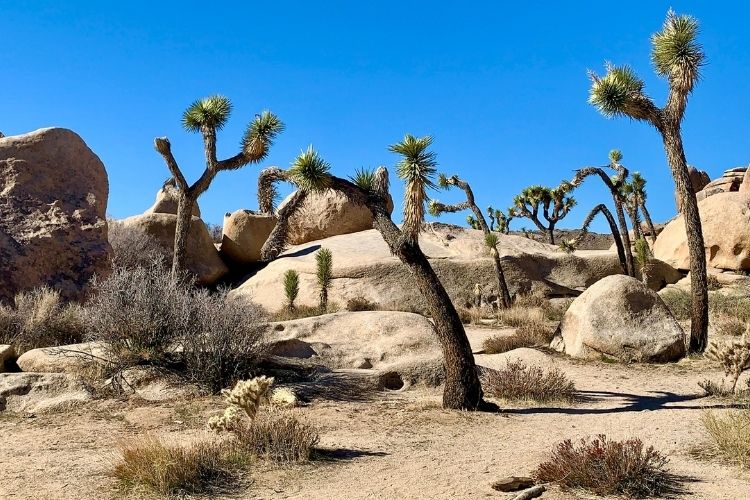
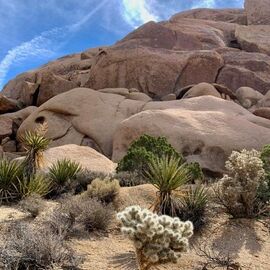
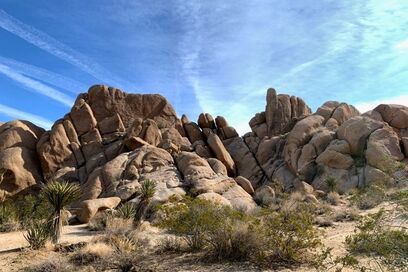
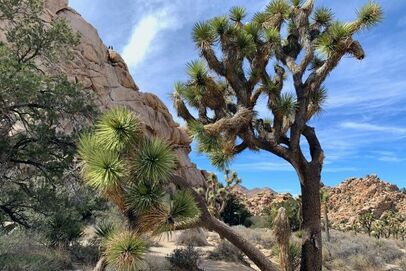
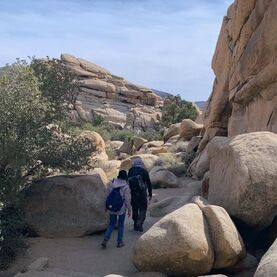
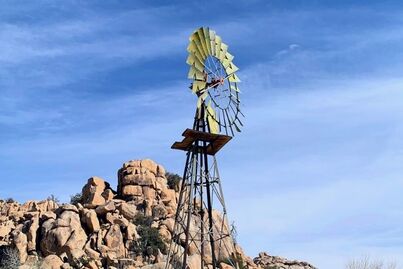

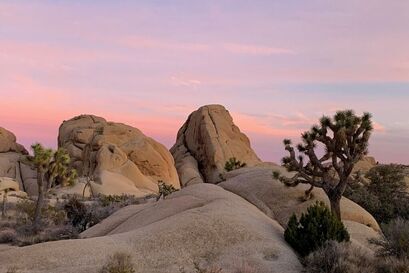

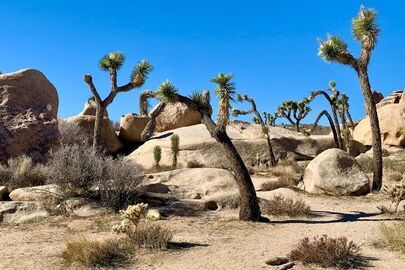
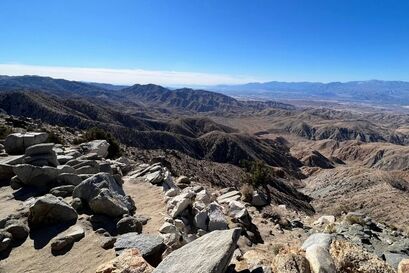
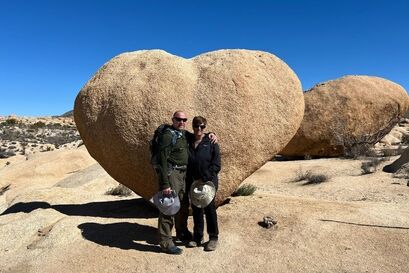
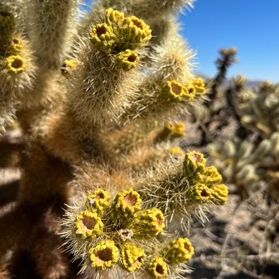
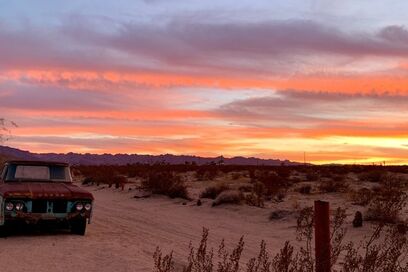
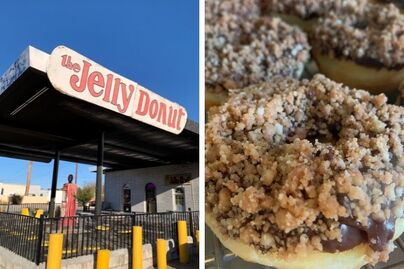
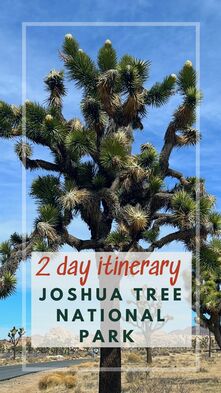
 RSS Feed
RSS Feed
